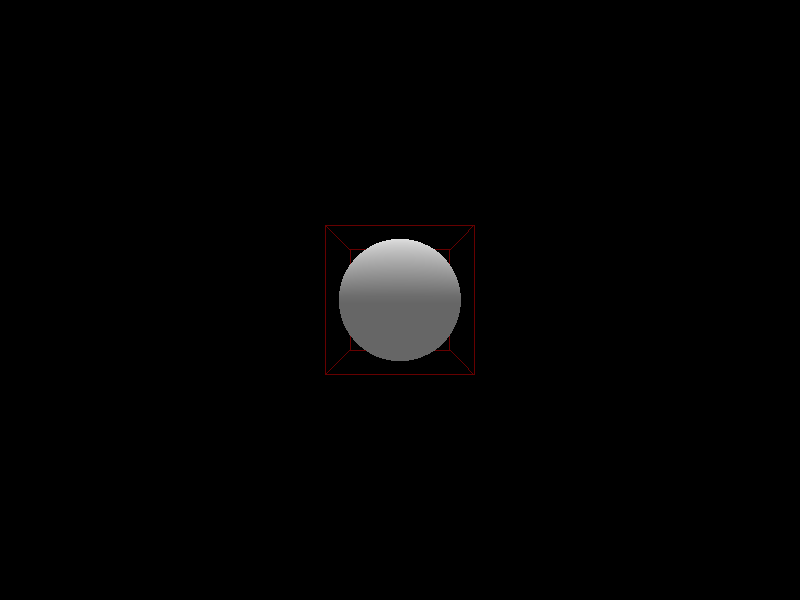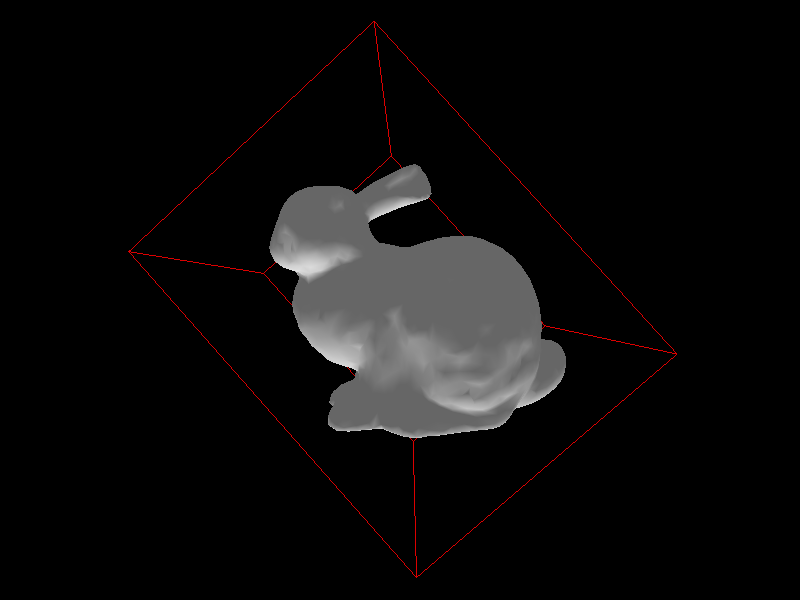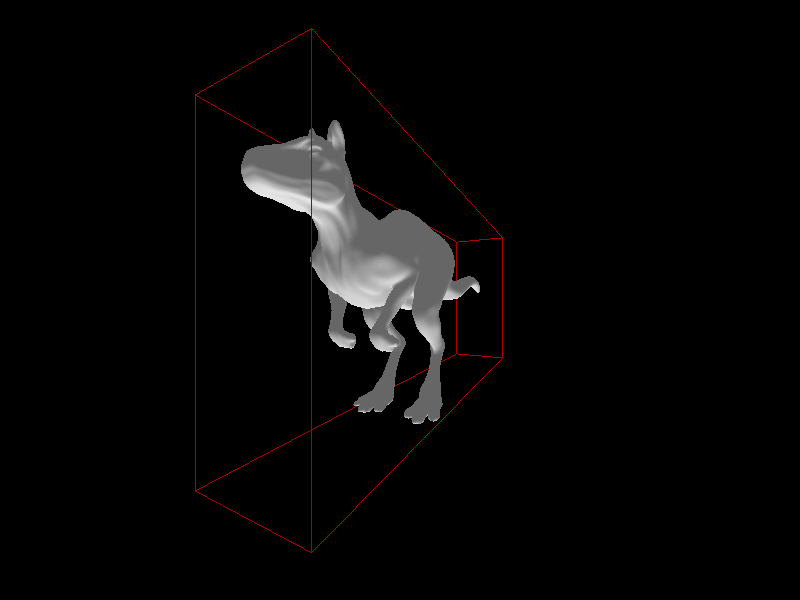OBB implementation in Python (using numpy)
This is basically a port of the code found on James' Blog, which in turn is a C++ implementation (using CGAL) of the ideas found in Stefan Gottschalk's PhD thesis. The central idea of this OBB contruction is to compute a covariance matrix for a point set and then find the eigenvectors of this covariance matrix.
Simply run
pip install pyobb
The pyobb package contains a single class: OBB. An OBB has the following attributes:
- centroid: the OBB center
- min: the OBB point with the smallest XYZ components in the local frame (i.e., -[width/2, height/2, depth/2])
- max: the OBB point with the largest XYZ components in the local frame (i.e., [width/2, height/2, depth/2])
- points: the 8 points of the OBB
- extents: the extents of the OBB in the XYZ-axis (i.e., the scaled unit vectors of the global frame)
- rotation: the rotation matrix of the OBB
You have three different ways to build an OBB: using a covariance matrix, using a point set and using a triangle mesh. Those ways are respectively implemented by the methods:
- OBB.build_from_covariance_matrix(covariance_matrix, points): expects a 3x3 covariance matrix and a set of 3D points
- OBB.build_from_points(points): expects a set of 3D points
- OBB.build_from_triangles(points, triangles): expects a set of 3D points and a flat list of indices refering those points for which every 3-uple would form a triangle
For instance, you can create an OBB from the points of a lat/lon sphere
from math import pi, cos, sin, sqrt
from pyobb.obb import OBB
# creates a lat/lon sphere with a given radius and centered at a given point
def sphere(radius, center, num_slices=30):
theta_step = 2.0 * pi / (num_slices - 1)
phi_step = pi / (num_slices - 1.0)
theta = 0.0
vertices = []
for i in range(0, num_slices):
cos_theta = cos(theta)
sin_theta = sin(theta)
phi = 0.0
for j in range(0, num_slices):
x = -sin(phi) * cos_theta
y = -cos(phi)
z = -sin(phi) * sin_theta
n = sqrt(x * x + y * y + z * z)
if n < 0.99 or n > 1.01:
x /= n
y /= n
z /= n
vertices.append((x * radius + center[0],
y * radius + center[1],
z * radius + center[2]))
phi += phi_step
theta += theta_step
return vertices
obb = OBB.build_from_points(sphere(1, (0, 0, 0)))
Which gives you this OBB:
You can also create an OBB from the vertices and faces of OBJ models
from pyobb.obb import OBB
from objloader import OBJ # source: http://www.pygame.org/wiki/OBJFileLoader
obj = OBJ(filename='bunny.obj') # stanford bunny
# obj = OBJ(filename='killeroo.obj') # killeroo
indices = []
for face in obj.faces:
indices.append(face[0][0] - 1)
indices.append(face[0][1] - 1)
indices.append(face[0][2] - 1)
obb = OBB.build_from_triangles(obj.vertices, indices)
Which gives you something like this:
or this:


